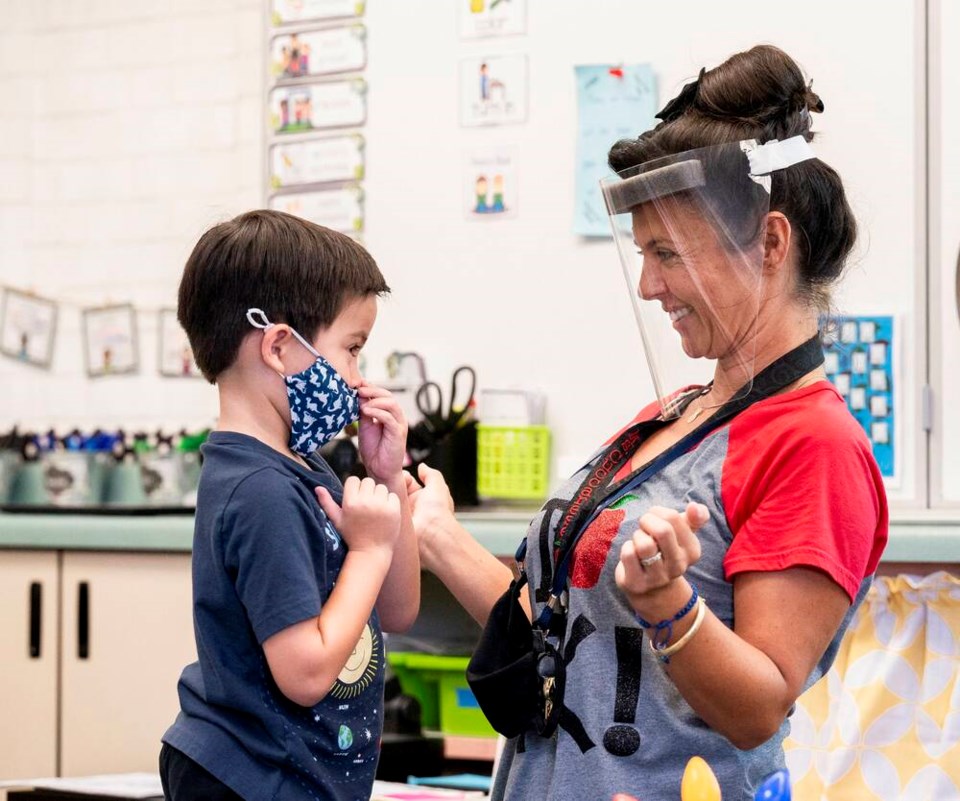My earliest recollection about the crossroads between artificial intelligence and classroom education was my Grade 12 math teacher, who, good man that he was, did not seem to understand calculus any better than we, his non-math-oriented students, did.
Despite this, “Father Bert,” as we called him, always managed to engage the interest of a classroom full of rugby-playing surfers.
Computers that duplicated some aspects of human intelligence? Neither he nor we knew about the fact that calculus would play such an important role in the development of what came to be called artificial intelligence and the kind of small laptop computer on which this article is being written.
Artificial intelligence is the apparent simulation by machines of human intelligence processes.
Who knew that the term “artificial intelligence,” besides being an essential element in much we take for granted in our daily lives in 2021, would no longer be just a popular oxymoron describing people like Tucker Carlson and CNN “news.”
For the purposes of this article, artificial intelligence refers to systems that can perform a specific task independently, using human-like capabilities.
And yes, in 2021, AI is beginning to play a potentially significant role in the development and delivery of education at all levels.
We already know that AI, as it applies to teaching and learning, can assist with acquiring and processing new information. But there are traps: AI also uses existing algorithms to self-correct to the word it “thinks” you intended to use — the bane of email writers.
It seems likely that AI will increasingly be used to help find out what a student does and does not know, building a personalized study schedule for each learner, considering his/her knowledge gaps. By doing this, AI will tailor studies according to a student’s specific needs, thereby increasing the efficiency of learning.
AI can already produce “smart” content, with the ability to expand or cross-reference content at the click of a mouse on the “blue” text in a document.
“Smart” content encourages new ways of perceiving information, such as web-based study environments that lead the learner both laterally and vertically as he/she progresses though a topic. For example: “Why do most accounts of the French Revolution of 1789 ignore the role played by potatoes? Click on potatoes to follow this interesting aspect of history.”
In this same way, artificial intelligence can be used to generate and update the content of lessons, keeping the information up to date and customizing it for different learning curves.
For teachers and administrators, AI can simplify time-consuming administrative tasks such as grading, assessing and responding to student essays and projects.
The adoption of innovative AI technologies opens up new ways of interacting for students with learning disabilities. AI grants access to education for students with special needs: students who are deaf and hard of hearing, who are visually impaired and who experience a variety of learning disabilities.
Yet despite all this, despite the fact that AI can translate and transcribe speech, calculate complex mathematical problems in a microsecond and put a “rover” on Mars, there are still many things AI can’t do — yet.
Machine-learning systems can be fooled or confounded by new situations. A self-driving car can become confused by a scenario that a human driver could handle easily.
An AI system laboriously programmed to carry out one task has to be programmed all over again to do something else.
Which leaves the all important question as to whether artificial intelligence will eventually replace teachers in the classroom.
Not according to Mathew Lynch, a writer for the online Tech Advocate website.
Lynch points out that while artificial intelligence can teach students skills or reinforce difficult concepts for struggling students, “human teachers will always be needed to manage the classroom environment and to give students the encouragement they need.”
Lynch goes on to identify a critical aspect of teaching for children: the teaching of social-emotional skills. “While artificial intelligence programs have proven they can teach students to read or do math, teaching social and emotional skills is more complex. That kind of learning needs the human touch that only teachers can provide.”
Let’s face it: good teachers will never become obsolete. Teachers may no longer be valued as content-area experts, but the best teachers care about their students.
While he may not have been a math genius, my Grade 12 math teacher did manage to inspire us to do our best.
Artificial intelligence will never push that out of the classroom.
gfjohnson4@shaw.ca
Geoff Johnson is a former superintendent of schools.
- - -
To comment on this article, email a letter to the editor: letters@timescolonist.com



